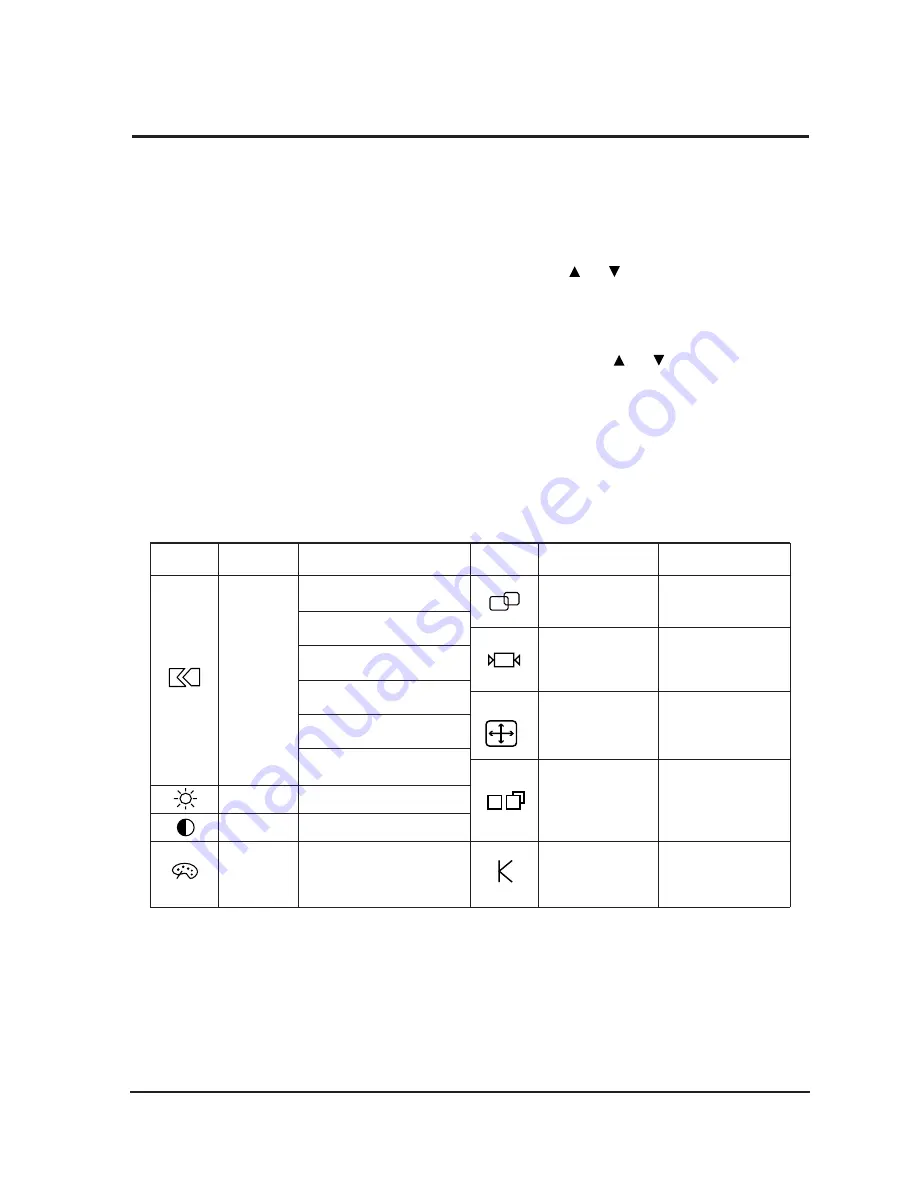
This monitor has no Òservice onlyÓ micom
controls. Should there be a problem with the
microprocessor, replace the entire circuit board.
There are, however, user accessible adjustment
features that are described below.
This monitor has factory preset display settings
for each of the signals listed in the standard
display modes Timing Chart (see pages 3-3 and
3-4). As a result, when the monitor senses one of
the standard signal timings, it automatically
adjusts to an optimum size and position.
However, the user may wish to adjust the monitor
to their own preferred settings rather than use
those preset at the factory. The monitor saves up
to 16 user defined settings.
4-2-1 OSD Window
The adjustable features described below all use
the on-screen menu system.
1. Push the
↵
button to open the display the on-
screen menu.
2. Use the
or
button to change an
adjustment icon, use the
↵
button to highlight
an adjustment icon, then use the + or Ð
buttons to make the adjustments.
3. To select another adjustment on the same
screen, use the
or
button to move to the
next selection.
4. When you are done making adjustments on an
adjustment icon, push the EXIT button.
5. When you are done making all adjustments,
push the EXIT button.
Table 4-3 shows the adjustment types and their
icons.
4 Operating Instructions
SyncMaster 33*TFT/53*TFT
4-3
4-2 Microprocessor Controls and Functions
Brightness
Contrast
Auto Reset
Auto Adjustment
Geometry
Color
Misc.
Language
Menu Position
Menu Display Time
Display Mode
0 ~ 100
0 ~ 100
No/Yes
No/Yes
No/Yes
x1, x2, x4, x8
Normal/Expand
Color Temperature
Mode1
Mode2
Mode3
0 ~ 100
0 ~ 100
0 ~ 100
Color Control
Red
Green
Blue
Image Size
Zoom
Display Size
0 ~ 100
0 ~ 100
0 ~ 100
0 ~ 100
Image Lock
Fine
Coarse
Position
Horizontal
Vertical
IBM
VGA1/70 Hz
0-100
740-860
VGA2/70 Hz
0-100
840-960
VGA3/60 Hz
0-100
740-860
VESA SVGA/56 Hz
0-100
964-1084
SVGA/60 Hz
0-100
996-1116
XGA/60 Hz
0-100
1284-1404
Icon
Description
Adjustment Range
Icon
Description
Adjustment Range
Table 4-3. Available adjustments




























